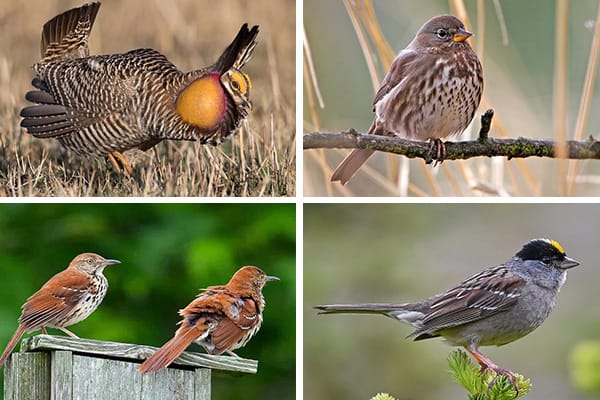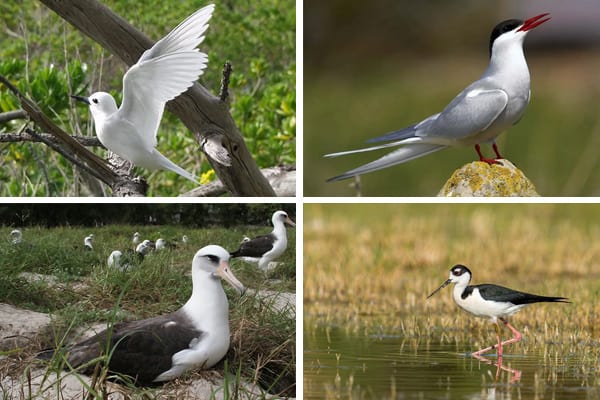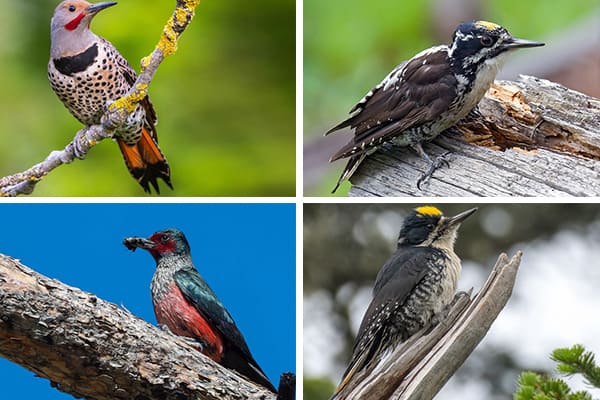4 Types of Cranes in Michigan (ID Guide & Photos)
Cranes are among the most majestic and fascinating birds that grace the landscapes of Michigan. Whether you’re a seasoned birdwatcher or simply someone who appreciates nature’s beauty, these elegant creatures offer endless intrigue. From graceful movements to striking features, cranes captivate anyone lucky enough to spot them in the wild.
Michigan is home to several crane species, each with its own unique characteristics and behaviors. Understanding these magnificent birds can enhance your outdoor adventures and deepen your appreciation for Michigan’s rich biodiversity. Join us on a journey through the skies as we explore four types of cranes found in this beautiful state, complete with identification tips and stunning photographs.
1. Sandhill Crane: Appearance, Behavior, and Habitat
The Sandhill Crane is an elegant bird, easily recognized by its gray plumage and distinctive red crown. Standing around four feet tall, these cranes boast long legs and necks that allow them to navigate their wetland habitats gracefully.

You can often hear their trumpeting calls echoing across Michigan’s marshes in the early mornings and late afternoons. Their social behavior is captivating; they form strong pair bonds and often engage in elaborate courtship dances that include bowing and jumping.
Sandhill Cranes prefer shallow wetlands, grasslands, and agricultural fields where they forage for grains, insects, and small amphibians. During migration seasons, look for them congregating in large numbers as they rest along lakeshores before continuing their journey southward. These majestic birds are a true symbol of Michigan’s rich biodiversity.
2. Whooping Crane: Characteristics and Conservation Efforts
The Whooping Crane is a magnificent bird known for its striking white plumage and long legs. Standing about five feet tall, it showcases a wingspan that can reach over seven feet. These cranes are easily identifiable by their black-tipped wings and distinctive red crowns.
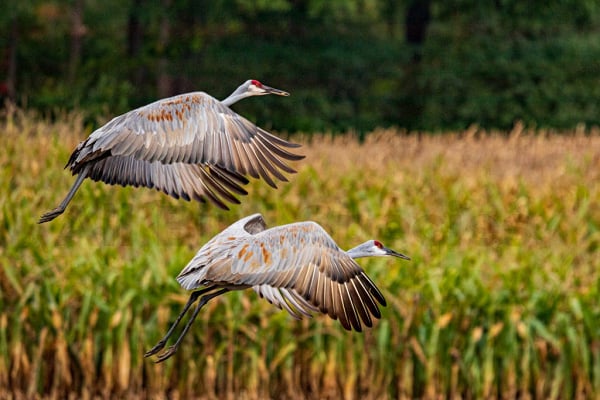
Once teetering on the brink of extinction, Whooping Cranes have become symbols of conservation success. Their population dwindled to just 15 individuals in the 1940s due to habitat loss and hunting.
Today, dedicated organizations work tirelessly to protect these majestic birds. Conservation efforts include habitat restoration and captive breeding programs to reintroduce them into the wild. Monitoring migration patterns also plays a crucial role in ensuring safe passage during seasonal travels.
Awareness campaigns educate the public on how they can help preserve vital wetland habitats essential for these cranes’ survival. The collaborative effort continues as more people join in protecting this iconic species in Michigan and beyond.
3. Blue Crane: Identification and Distribution in Michigan
The Blue Crane is a striking bird that occasionally graces Michigan with its presence. Known for its elegant stature, it stands tall and slender, showcasing pale blue feathers that glimmer in the sunlight.
This species boasts long legs and a lengthy neck, which add to its graceful appearance. Its distinctive crown of feathers atop its head gives it a regal look.
Regarding distribution, Blue Cranes are primarily found in southern Africa but have been spotted migrating through parts of Michigan during certain seasons. Sightings are rare, making each encounter special for avid birdwatchers.
They prefer open grasslands and wetlands where they can forage for food like grains and insects. Observing these magnificent creatures excites nature outings in the state’s diverse ecosystems.
4. Demoiselle Crane: An Uncommon Sight in Michigan
The Demoiselle Crane is a rare visitor in Michigan, often drawing birdwatchers’ attention. Known for its delicate appearance, this crane boasts elegant plumage, strikingly long neck, and slender legs. Its graceful movements make it a captivating sight.
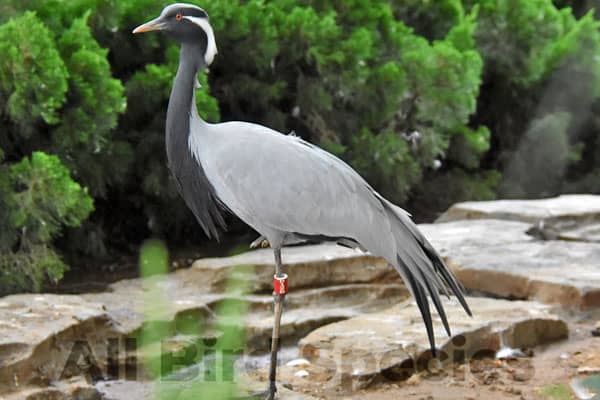
Typically found in Central Asia and parts of Europe, the Demoiselle Crane has occasionally ventured to North America. These fleeting appearances are usually seen during migration periods or when they stray from their typical habitats.
Spotting one can feel like finding a hidden gem amongst more common species. Their distinctive calls resonate through wetlands, creating an enchanting atmosphere as they take flight.
While sightings are infrequent, those lucky enough to witness them may catch glimpses of their playful courtship dances—a true marvel of nature that showcases their unique behaviors and social interactions within flocks.
How to Identify Cranes in the Wild?
Identifying cranes in the wild can be an exciting challenge. Start by observing their size and shape. Cranes are tall, long-legged birds with elegant necks.
Pay attention to their distinctive calls. Each species has a unique sound that can help you recognize them even from afar. The Sandhill Crane’s rattling call is particularly memorable.
Look for their coloration too. The Sandhill Crane features gray feathers, while the Whooping Crane boasts striking white plumage. Note any black accents, especially around the head and face.
Habitat is another clue to identification. Sandhill Cranes often inhabit wetlands and fields, while Whooping Cranes prefer more secluded marshlands during nesting season.
Finally, observe their behavior. Cranes have a graceful way of moving—watch how they dance or forage for food in shallow waters or open fields. With these tips, spotting cranes becomes an engaging experience on your outdoor adventures!
Tips for Photographing Cranes in Michigan
Capturing images of cranes in Michigan can be a rewarding experience. Start by choosing the right time of day. Early mornings and late afternoons offer soft light that enhances your photos.
Use a zoom lens, ideally between 200 and 400mm, to maintain distance without disturbing these majestic birds. This allows you to capture their details while respecting their space.
Be patient and quiet. Cranes are sensitive creatures and will quickly take flight if they sense disturbance. Try blending into your surroundings to minimize movement.
Consider the background for added context; wetlands or open fields provide stunning backdrops. Experiment with different angles—shooting from below eye level can create dramatic effects.
Lastly, keep an eye on weather conditions. Overcast days often lead to more vivid colors without harsh shadows, perfect for showcasing these incredible birds in action.
Fun Facts About Cranes
Cranes are fascinating creatures that captivate birdwatchers and nature lovers alike. Did you know they can live up to 30 years in the wild? This longevity allows them to form strong bonds with their mates, often reuniting year after year.
These elegant birds are known for their impressive dance displays. Cranes perform intricate movements during courtship — jumping, bowing, and flapping their wings. It’s a breathtaking sight in any Michigan wetland or field.
Another interesting fact about sandhill cranes is their migratory behavior. Each season, they travel thousands of miles between breeding and wintering grounds. Their journey showcases incredible navigation skills, making them true adventurers of the avian world.
Lastly, cranes have deep cultural significance across various societies. In art and folklore worldwide, they’re often symbols of peace and longevity, highlighting humanity’s enduring connection with nature’s wonders.
Bottom Line about Michigan Crane Species
Cranes in Michigan are remarkable creatures that contribute to the state’s rich biodiversity. Protecting these birds is essential for their survival and maintaining the delicate balance of our ecosystems. By understanding their habitats and behaviors, we can better appreciate their role in nature.



